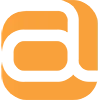Whilst it isn't a requirement for private businesses to make their websites accessible, Arkom thinks it's beneficial to all parties to...make it so.
Website Accessibility Issues
- Home pages that communicate important information using images or animations and act as barriers to visually impaired users. Even though you can see text on the page it may be 'locked up' within an image if the site hasn't been constructed with all user groups in mind.
- Fly out navigation menus that require accurate mouse control may be regarded as barriers to access for users with motor disabilities. These menu systems are also often invisible to blind users who have special 'speaking' browsers.
- Screen text that has fixed sizes - users with poor eyesight will need to be able to re-size your text using their own browser settings. This requires detailed understanding of accessible Website construction techniques to get right.
- Links from buttons which are images instead of from text - again users cannot re-size text that is a part of an image.
- Low contrast colour schemes or colour combinations that are difficult to read by people with colour blindness.
Maximising User Accessibility
In an ideal world, your site is initially designed using techniques (like the ones above) which make it accessible to the widest possible audience. The W3C Web Accessibility Initiative (WAI) has a comprehensive list if you're looking to compile a list of improvements.
Ae more accessible also has more potential - most of the techniques that are helpful to disabled users are also Search Engine Optimisation friendly - so you're helping yourself as well as others.
